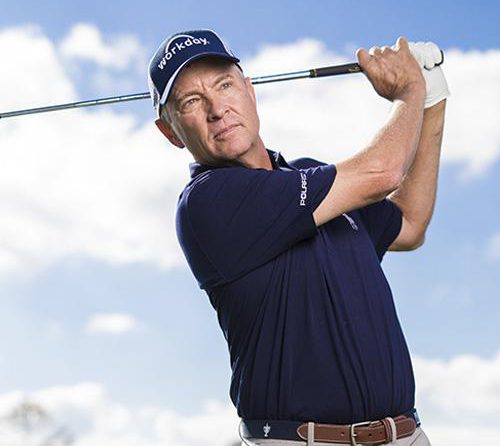Optimal Hip Alignment for Enhanced Swing Power
****
In the quest for enhanced swing power, the alignment of one’s hips plays a critical role. Improper hip alignment can lead to inefficiencies in the swing, hindering distance and accuracy. Conversely, maintaining optimal hip alignment ensures a fluid and potent motion.
During the backswing, the hips should rotate laterally away from the target by approximately 45 degrees. This alignment creates a coiled effect, storing energy in the glutes and core. As the downswing is initiated, the hips should begin to rotate back towards the target, unleashing the stored energy into a powerful, downward strike.
To ensure proper hip alignment, golfers should pay attention to the positioning of their hips in relation to their feet, knees, and shoulders. The hips should be directly over the feet, with the knees slightly flexed and pointed towards the target. The shoulders should be aligned parallel to the target line throughout both the backswing and downswing.
Maintaining a Neutral Spine for Improved Balance and Control
****
The neutral spine is a position where the natural curves of the spine are maintained while still maintaining an upright posture. This position allows for full range of motion and protects the spine from injury.
There are many benefits to maintaining a neutral spine, including:
Improved Balance and Control – When the spine is in a neutral position, it is able to better absorb shock and distribute weight evenly. This allows for improved balance and control during movement.
Reduced Risk of Injury – A neutral spine helps protect the spine from injury by preventing excessive stress on the muscles and ligaments of the back.
Improved Flexibility – Maintaining a neutral spine helps to keep the muscles and ligaments of the back flexible, which allows for greater range of motion.
To maintain a neutral spine, it is important to:
Stand Up Straight – When standing, make sure your shoulders are back and your head is held high. Your chin should be slightly tucked in and your back should be straight.
Sit Up Straight – When sitting, make sure your feet are flat on the floor and your knees are bent at a 90-degree angle. Your back should be straight and your shoulders should be back.
Sleep on Your Back – When sleeping, sleep on your back with a pillow under your head and knees. This will help to maintain a neutral spine while sleeping.
Maintaining a neutral spine is important for overall health and well-being. By following these tips, you can help to maintain a healthy spine and improve your balance, control, and flexibility.
Proper Arm Positioning for Efficient Clubhead Speed
****
Correct posture is crucial for swing progression. Precision and power depend on the posture that is divided into lower- and upper-body functionality.
Starting with the upper body posture: a loose, relaxed grip will do wonders for your drive. A rigid grip will hinder a smooth swing motion. The backswing and downswing are where grip resilience connects to power. The right upper body swing should be full, circular and in sync with the lower body.
When you set up for a shot, take a practice swing or two to get a feel for the club. As you do, pay attention to the position of your arms. Your elbows should be slightly bent, and your forearms should be parallel to the ground. Your hands should be about shoulder-width apart, and your grip should be firm but not too tight.
Alignment of Hands and Club for Accuracy and Ball Striking
****
Optimal Grip:
- Left-Hand Grip: Grip the club with your left hand so that the club rests in the crease between your thumb and forefinger. Your fingers should be evenly spaced along the club and your palm should face your target.
- Right-Hand Grip: Overlap your right hand over your left, with your right thumb resting on top of the shaft. Your right hand should be positioned so that your knuckles align with your left thumb.
Proper Stance and Alignment:
- Stand with your feet shoulder-width apart, with your toes pointed slightly outward.
- Align your clubface to your target line.
- Position your hands so that the club shaft is perpendicular to the ground.
Swing Technique:
- Take a practice swing to check your alignment and make sure you are making contact with the ball in the center of the clubface.
- Backswing: Rotate your torso and arms back together, keeping your head down and your weight centered.
- Downswing: Shift your weight to your front foot and start your downswing by rotating your hips and shoulders. Swing through the ball with a smooth, level motion.
- Follow-through: Continue your swing past the ball, extending your arms and finishing with your weight on your front foot.
Maximizing Swing Mechanics through Core Engagement
## ****
Your core is the key to generating power and control in your golf swing. By engaging your core muscles, you can stabilize your swing, improve your balance, and increase your clubhead speed.
There are a few key ways to engage your core during your golf swing. First, make sure that you are standing up straight with your shoulders back and your chest out. Second, keep your abs tight throughout your swing. You should feel your core muscles working to keep your spine stable. Finally, rotate your hips and shoulders together as you swing. This will help you generate power and control your swing.
Here are some tips for maximizing your core engagement during your golf swing:
- Practice your core exercises. There are a number of exercises that can help you strengthen your core muscles. Some of the best exercises for golf include planks, sit-ups, and crunches.
- Focus on your breathing. When you are swinging the club, make sure to breathe deeply and evenly. This will help you stay relaxed and focused.
- Get a lesson from a golf professional. A golf professional can help you identify any weaknesses in your swing and give you tips on how to improve your core engagement.
That concludes our exploration into the mechanics of optimal golf swing posture. As we’ve seen, maintaining proper posture is essential for generating power and accuracy in your swing. By following the tips outlined in this article, you can improve your posture and take your golf game to the next level.
Remember, practice is key to developing good posture. The more you swing, the more comfortable you’ll become with the proper mechanics. So get out on the course and start practicing!





